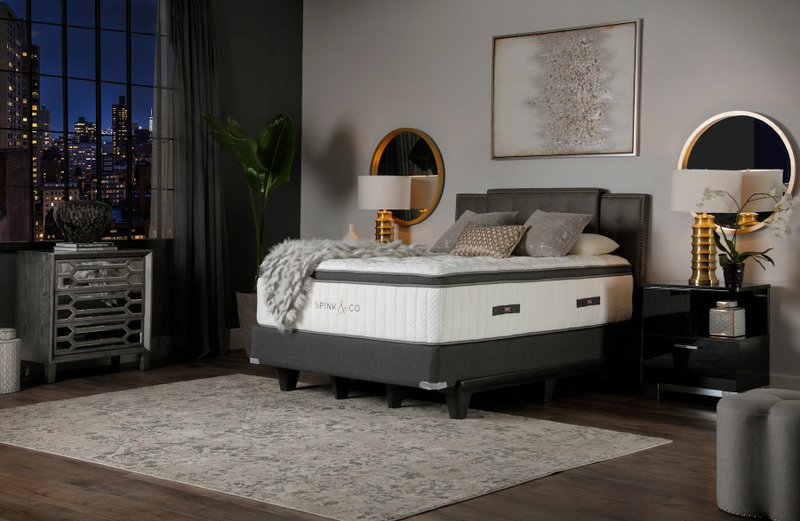I'm not getting older. I just need a new mattress. That's my story anyway, and I'm sticking to it as I wait, and wait, for the mattress I ordered several weeks ago to land in my bedroom and transform my cranky back into the one I took for granted as a teenager.
While I am eager to be proved right (ever the optimist), I've been looking for some hard evidence to support my impetuous act. Based solely on a recent two-night stay in a nice hotel while out of town on business, I bought a mattress over the phone, which cost the equivalent of a nice vacation.
"This better be good," was all my husband could say.
I've been wringing my hands ever since. Was it a fluke? Is all the mattress-industry hype about the life-changing, pain-relieving, sleep-improving properties that a padded square can provide just a bunch of foam-filled hooey?
I grilled some experts and looked at a couple of studies to try to get some solid facts in a notoriously squishy business.
"The mattress industry gets a bad rap," said Mary Helen Rogers, spokeswoman for the Better Sleep Council. "Knowing what you're buying gets very confusing, yet the differences between mattresses are critical. That's the rub."
If you can believe the few small studies, which are dubiously sponsored by groups like the International Sleep Products Association and the Sleep to Live Institute (but who else is going to fund them?), a new mattress can do a lot to relieve back pain and provide a better night's sleep.
One study out of the University of Oklahoma had 59 healthy men and women with "minor musculoskeletal sleep-related pain and compromised sleep" record their sleep quality after spending 28 nights on their old mattresses, the average age was 9.5 years, and 28 nights on a new medium-firm mattress, which participants could keep at the end of the study if they wanted.
The new bedding system reduced back pain 48%, and improved sleep quality 55%, according to the study. However, the promise of getting to keep the mattress set might have caused participants to overstate the benefits, researchers noted.
In another study, researchers at Duke University had people sleep-test seven mattresses of varying firmness. They used sensors to measure how much sleepers tossed and turned, a sign of sleep quality. (Less movement is better.) They concluded that different mattresses suited different people better, and that when they found the one that best fit them, they woke up with less pain and said they slept better.
But rather than take the mattress industry's word for it I called a spinal surgeon to find out whether he thought having the right mattress could help prevent us from ever seeing him.
"A bad mattress won't damage your back, but it can cause you to have a sore back in the morning and cause poor sleep," said Dr. Stephane Lavoie, an Orlando-based spinal surgeon.
A medium-firm mattress appears to provide the best combination of comfort and support compared to mattresses that are too soft or too hard, he said.
Dr. Lavoie and industry experts define proper "support" as when your mattress keeps your spine aligned, and in a neutral position, minimizing any curves, as if you were standing up with good posture. The trick is that proper "support" is different for everyone.
Rogers shared the following mattress trends based on a consumer survey sponsored by the association:
• How often? Consumers' expectations for how long they expected to keep their mattress fell to under 10 years for the first time in two decades. Those who participated in the 2016 survey said they planned to get a new mattress every 9.4 years on average.
• How come? The leading reasons for buying a new mattress were current mattress wasn't providing a good night's sleep, waking up with a sore back, mattress was too soft or too hard, and mattress deterioration. (I checked all the above.)
• How much? Mattress shoppers expected to pay on average $1,110 for a queen sleep set (mattress and box springs). However, they actually paid around $930, according to the survey. In 2018, 73% paid less than $1,000 for their queen sets.
• Where? Most consumers (92%) insist on seeing and testing a mattress in a store before buying it; however, more than a quarter of respondents, particularly younger ones, would consider buying a mattress online.
• How big? Queen-size bed sets are by far the most popular in America. Of the bed sets manufacturers shipped, 41% were queen. Shipments of king and twin were around 20% each, full (aka double) was 15%.
• What's inside? Innerspring mattresses are most popular, but two of five customers choose foam or a hybrid. One third of customers want a pillowtop, a mattress plus a comfort layer.
• How firm? Most buyers want a "medium-firm" mattress. That said, no industry standard exists for measuring firmness. It's subjective.
Join me next week for tips on how to buy the mattress for you. Hint: You won't find the answer in Consumer Reports.
Syndicated columnist Marni Jameson is the author of five home and lifestyle books, including Downsizing the Family Home — What to Save, What to Let Go.
HomeStyle on 08/03/2019
